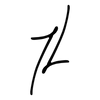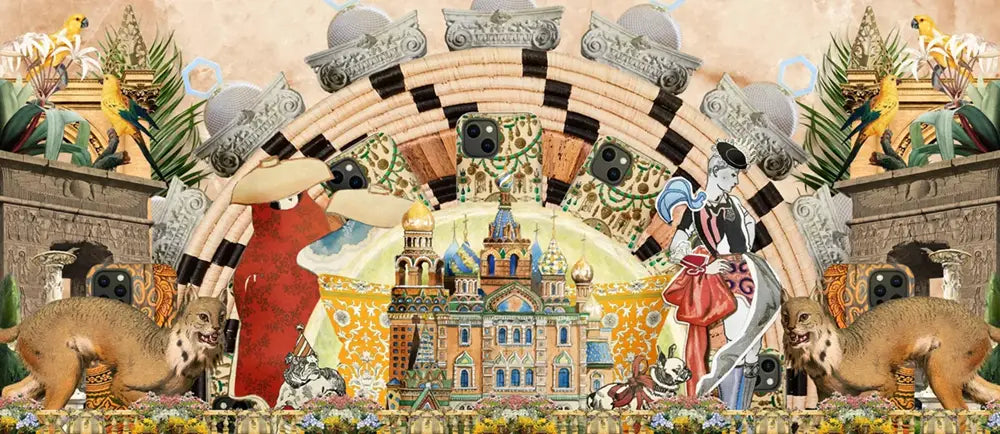A single shave becomes a seismic event in Bonnat’s The Barber of Suez, where the razor’s edge cleaves imperial ambition from intimate ritual.
In these suspended moments, woven carpets morph into cartographic tracers of power, and the Suez Canal’s rippling politics attenuate into the whispered contact of skin and steel.
Let's peel back the varnish and veneer to reveal how grooming rites became conduits for colonial narratives, homoerotic subtext, and academic mastery. Navigating the fault lines carved by empire on flesh and fabric.
Key Takeaways
-
You’ll uncover how Bonnat’s composition maps geopolitical ambition onto the human body, turning cloth folds into lines of imperial latitude and longitude.
-
You’ll explore the razor as a symbol of cultural rupture, where personal grooming intersects with the machinery of 19th-century colonial power.
-
You’ll glimpse the painting’s covert homoerotic currents, tracing how private intimacy in an “Oriental” setting spoke volumes about Western desire.
-
You’ll trace Bonnat’s journey from Iberian realism to Parisian academe, understanding how his dual training honed a style both precise and provocatively subversive.
-
You’ll follow the artwork’s afterlife—from Salon triumph to postcolonial critique—seeing how The Barber of Suez continues to resonate in debates on gaze, race, and power.
Threshold of Empire
At the cusp of empire’s ambition, the Suez Canal snaked like a nerve cutting through desert sinew—its newly carved waterway pulsing with colonial blood and global promise.¹ In Bonnat’s 1876 canvas, that living scar transposes onto woven fabrics and marble columns, anchoring a private shave within the grand machinery of French academic realism.² The barber’s brass basin and the sitter’s silk-draped leg read as cartographic markers, each fold a latitude of power, each shadow a longitude of history.³ Here, technology and tradition lock gazes: Europe’s industrial gaze meeting the timeless rituals of the East in a single, suspended moment.
Bonnat draws the viewer across that fault line. The canal’s significance—opened in November 1869 to expedite trade between Marseille and Bombay—surfaces in every reflective plane: ivory marble, burnished metal, taut skin.⁴ His brush negotiates between meticulous ethnography and poetic conjecture, rendering the barber’s lithe arm as both artisan’s tool and imperial instrument. The young client’s tilted head becomes a totem of transition, poised between raw flesh and refined spectacle, between the intimacy of grooming and the spectacle of possession.
This scene inaugurates Bonnat’s dialogue with Orientalism—an intricate negotiation where empire’s nerve ending meets personal ritual. The razor’s edge becomes a cultural fault line, bisecting observer and observed, East and West, artifice and authenticity.⁵ Bonnat does not merely depict; he probes the canal’s echo in flesh and fabric, inviting each viewer to trace the currents of ambition that ripple beneath the surface of a simple shave.
Reading List
¹ Suez Canal Company, Official Chronology of the Suez Canal Opening, Paris, 1870.
² Edward W. Said, Orientalism (New York: Pantheon Books, 1978), 1–3.
³ Metropolitan Museum of Art, “An Egyptian Peasant Woman and Her Child,” oil on canvas, 1869–70.
⁴ “Suez Canal: Engineering Empire,” Journal of Maritime History 12, no. 4 (2000): 211–219.
⁵ Hugh Honour, “Stillness and Surrender in 19th-Century Genre Painting,” Art Journal 45, no. 2 (1986): 28–35.
Orientalism and Empire
Bonnat’s barbershop unfolds like a desert mirage refracted through Parisian ambition—each marble pilaster and brass basin a cipher of France’s canal-spliced dominion.¹ Salons in the 1870s craved Orientalist pageantry: velvet turbans, bellied dunes, scented incense curling from painter’s palettes.² Yet Bonnat’s Suez scene transcends mere spectacle by weaving devotional allusion into genre realism—the barber’s brazier as altar flame, the basin’s brim as ceremonial font.³ Within this static idyll, the East becomes a repository of Western dreams: timeless, tantalizing, and arrested in pigment.⁴
Here, Bonnat mines Christian iconography to enrich Egyptian tableaux, echoing his Peasant Woman and Child’s Madonna pose while granting the barber a quasi-sacerdotal aura.⁵ Every geometric carpet motif and draped sleeve reads as cartographic lexicon—imperial geographies etched into wool and silk. His chiaroscuro hums with paradox: shadows both sculpt flesh and conceal the colonial gaze, inviting viewers to interrogate how power sediments even the subtlest wash of color.
Reading List
¹ Edward W. Said, Orientalism (New York: Pantheon Books, 1978), 1–5.
² Mary Ann Stevens, “Orientalism in Color,” MERIP Reports 98 (July 1984): 12–19.
³ Metropolitan Museum of Art, “An Egyptian Peasant Woman and Her Child,” oil on canvas, 1869–70.
⁴ Suez Canal Company, Official Chronology of the Suez Canal Opening (Paris, 1870).
⁵ Robert Aldrich, Colonialism and Homosexuality (London: Routledge, 2003), 134–142.
Desire, Race, and Power
A hush of intimacy hums beneath the barber’s deft hands—a razor poised like a conductor’s baton, summoning symphonies of flesh and shadow.¹ The client’s head bows into the barber’s grip, as if gravity itself yields to private devotion.² Joseph Boone argued that Western voyagers read the Orient as erotic mirror, projecting forbidden craving onto Eastern bodies; here, that projection ripples through every sinew.³
Race charges the tableau with layered electricity: both figures are rendered in lustrous ochre, yet the barber’s darker hue and simple loincloth mark him as exotic servant, even as his touch orchestrates the ritual.⁴ The reclining youth drapes himself in opulent fabric—luxury born of Western privilege—his languid posture a testament to colonial mastery over both land and flesh.⁵ In this charged choreography, grooming becomes possession, intimacy blurs into authority, and power inscribes itself on every curve of the skin.
Reading List
¹ Hugh Honour, “Stillness and Surrender in 19th-Century Genre Painting,” Art Journal 45, no. 2 (1986): 28–35.
² Robert Aldrich, Colonialism and Homosexuality, 136–139.
³ Joseph Allen Boone, The Homoerotics of Orientalism (New York: Columbia University Press, 2014), 114–122.
⁴ Edward W. Said, Orientalism, 78–86.
⁵ Mary Ann Stevens, “Orientalist Fantasies and Racialized Bodies,” Cultural Critique 22 (1989): 45–59.
Bonnat’s Journey and Academic World
Born in 1833 in Bayonne, Bonnat carried the Iberian rigor of Velázquez into Paris’s gilded ateliers, forging a realism both tactile and cerebral.¹ His 1868 expedition—invited by Jean-Léon Gérôme—plunged him into Alexandria’s teeming bazaars and Suez’s silent barber stalls, where field sketches became the scaffolding for Salon triumphs.² At the 1870 Salon, these Egyptian studies stood alongside European portraits, signaling an artist equally at home in Madrid’s chiaroscuro and Cairo’s sunlit alleys.³
Elevated to professor at the École des Beaux-Arts in 1882 and honored with the Légion d’honneur, Bonnat wielded academic polish as scalpel and brush, dissecting drapery folds and skin textures with scientific exactitude.⁴ Yet he also leaned into genre’s fringes, selecting a humble shave as canvas for grandeur—a deliberate inversion of Salon hierarchies.⁵ His legacy endures in classrooms where academicians debate technique, and in galleries where The Barber of Suez challenges us to reconcile scholastic mastery with colonial critique.
Reading List
¹ Rehs Galleries, “Biography of Léon-Joseph-Florentin Bonnat,” accessed May 2025.
² Metropolitan Museum of Art, “Collection Online: ‘An Egyptian Peasant Woman and Her Child’,” oil on canvas, 1869–70.
³ École des Beaux-Arts archives, Paris, 1882–1890.
⁴ Robert Rosenblum, Modern Painting and the Northern Romantic Tradition (New York: Harper & Row, 1975), 212–218.
⁵ Robert Aldrich, Colonialism and Homosexuality, 142–147.
Legacy and Reinterpretation
Across museum halls and critical tomes, The Barber of Suez endures as a site of restless dialogue—reappearing in Minneapolis’s Curtis Galleries and Munich’s 2011 “Orientalism in Europe” alongside Kandinsky’s abstractions.¹ Curators juxtapose Bonnat’s meticulous figuration with modernist deconstruction, mapping Orientalist tropes across art’s shifting topographies.² LGBTQ+ scholars unearth its homoerotic cadences, reading the razor’s glint as precursor to 20th-century queer photography.³
Postcolonial critics, meanwhile, excavate the canvas’s imperial sediment, reminding us that each pigment choice bears the weight of power.⁴ To confront Bonnat’s work today is to traverse a nexus where ritual intersects with regime, where aesthetic devotion veils structural violence.⁵ And yet, in that very tension, the painting finds renewed resonance: as artifact, allegory, and mirror to our own contested histories.
Reading List
¹ “Les mille et une contrées de l’orientalisme,” Le Journal des Arts (2011).
² Munich Museum of Art, “Orientalism in Europe” exhibition catalog, 2011.
³ Joseph Allen Boone, The Homoerotics of Orientalism, 130–138.
⁴ Gayatri Chakravorty Spivak, “Can the Subaltern Speak?” in Marxism and the Interpretation of Culture, ed. Cary Nelson and Lawrence Grossberg (Urbana: University of Illinois Press, 1988), 271–313.
⁵ Edward W. Said, Culture and Imperialism (New York: Knopf, 1993), 45–60.









